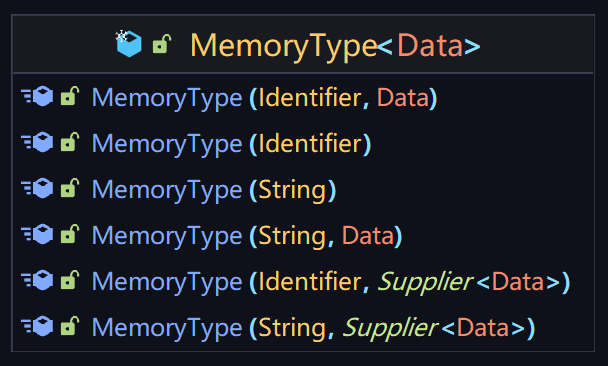Chapter 2: Memory - The Hippocampus of the Entity
author: daoge_cmd
The translation made by AzaleeX contributed to the PowerNukkitX documentation
1.0 Memory type and memory
For a creature, there is not only behavioral logic, but also some real-time data during its life cycle. For example, for a sheep, if it finds a player with wheat in its hand nearby and tries to move over, its "mind" should store the "memory" of the corresponding player. For example, for zombies, if they want to attack the nearest player, they first need to write the memory of the corresponding player to their "mind". This way the pathfinder, attack actuator, controller and other components can work properly according to the data and achieve the target behavior
We call each of the above "data" a memory typeMemoryType. One of the sheep corresponding to the memory isNEAREST_FEEDING_PLAYER (recently fed to players), the zombie counterpart isATTACK_TARGET(Hate target)
"The "mind" is the memory memoryMemoryStorage,The concept is well understood, each instantiated entity has a separate memory, and all memories of the entity are stored in the memory
1.0.1 Create a new memory type
The available constructors for MemoryType are as follows:

To create a new memory, we need to provide a namespace identifierIdentifierand memory defaults (default values are returned when attempting to retrieve the value of a non-existent memory from memory, either as constants or by providingSupplier<Data>(dynamically generated)
The namespace identifier is the "identity card" for each memory type, and the namespace used internally by the PNX core isminecraft:,If you want to add a new memory type to the plug-in, please use a different type thanminecraft:namespace to avoid duplication
All memory types used by the core are stored in the interfacecn.nukkit.entity.ai.memory.CoreMemoryTypes
1.1.0 Universality
For attributes that have the same meaning (e.g. hate target) used by different entities, we should try to make them use the same memory type. This way, if we want the zombies to attack the bitter enemies, we can set their "hate targets" to each other.
1.1.1 Connecting different components
In fact, memory not only provides information for behavior, it also acts as a bridge between components. Several motion controllers by default, for example, do this by readingMOVE_DIRECTION_START、MOVE_DIRECTION_ENDand other memory moving entities, the pathfinder moves by readingMOVE_TARGETCalculate the path.
Through memory storage, different simple components are seamlessly linked together, enabling complex behavior of entities
1.2.0 Saved as an attribute or saved as a memory ?
For entity data (life value, attack damage, hate target, rage status, etc.), you can choose to store it directly on the entity class as an attribute and abstract it with the interfacegetter/setter. You can also choose to keep it in the entity memory as MEMORY. Shouldn't all data be saved into memory then ?
After reading the above, you may think that it should all be stored in memory, however, this is not necessarily good.
For entity base properties, such as blood, life, attack damage, etc., we specify that they should be saved as properties of the entity class and abstracted using the interface
For entity runtime properties, such as warden's rage value, entity pathfinding target, hate target, etc., we specify that they should be saved into memory
If you still can't tell the difference correctly, we have a simple way to determine if the property should be saved after the entity lifecycle has ended (simply put, close() dropped). If it should be saved, you should save it as a property of the entity class instead of memory
© PowerNukkitX Dev team